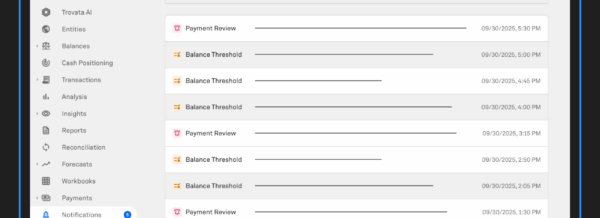You may already be familiar with the term “Cash Conversion Cycle” (CCC), but have you considered its potential as a solution to your company’s liquidity and cash flow challenges? The CCC is a powerful tool that can address some of the most pressing pain points faced by decision-makers striving to reduce costs and boost liquidity.
In this article, we invite you to explore the CCC as a practical, actionable tool for addressing your business’s financial challenges. We’ll delve into the nuances of working capital management, inventory optimization, and accounts management, all to enhance your financial health. If you’re a decision-maker who wants to minimize costs and fortify your liquidity position, read on. The CCC might hold the key to transforming your organization’s position.
Understanding the Cash Conversion Cycle
The Cash Conversion Cycle (CCC) measures the number of days it takes a company to convert its cash into sales and then back into cash. It is also known as the cash cycle or net operating cycle. The CCC is more than just a numerical metric; it’s a powerful gauge of how effectively a company handles its working capital. It’s about optimizing the time it takes for cash to flow in and out of your business. This efficiency in managing working capital can make a significant difference in your financial health.
Why CCC Matters for Modern Businesses
In modern business, every decision counts. The CCC isn’t just about abstract numbers; it’s about tangible impacts. With high interest rates and economic uncertainty looming over corporate decision making enterprises may see fit to hoard cash. Something we saw during the pandemic, as some companies began hoarding cash and suspended stock buybacks and dividends, saving more than $250 billion in 2020 (Davide Pettenuzzo, Riccardo Sabbatucci, and Allan Timmermann, “Outlasting the Pandemic: Corporate Payout and Financing Decisions During COVID-19,” CEPR Discussion Paper, May 1, 2021).
However, A well-managed CCC can directly influence liquidity by reducing the amount of time your money is tied up in operations. It also paves the way for substantial cost reductions by streamlining processes and minimizing unnecessary financial slack.
Components of the CCC
The CCC consists of several components, each playing a distinct role in determining the efficiency of your financial operations. Let’s break them down and shed light on how they collectively influence your CCC value:
Days Inventory Outstanding (DIO): This metric measures the average number of days it takes for your inventory to turn into sales. A Low DIO signifies quicker inventory turnover, usually meaning a lower cost of goods sold (COGS). A lower DIO can free up cash that would otherwise be tied up in stockpiles.
Days Sales Outstanding (DSO): The DSO measures your collection process. DSO calculates the average number of days for your credit sales to be converted into cash. A lower DSO indicates you’re collecting payments faster, improving your liquidity.
Days Payable Outstanding (DPO): DPO evaluates the average number of days you take to settle your accounts payable. Extending payment terms strategically can help you hold onto cash for extended periods, boosting your working capital.
These three components, DIO, DSO, and DPO, form the core of the CCC. Their relationship is pivotal in determining how efficiently your business manages cash flow.
Learn more about calculating the Cash Conversion Cycle and discover the nuances of metrics like accounts receivable and accounts payable.
The Impact of CCC on Liquidity and Cost Reduction
The Cash Conversion Cycle (CCC) isn’t a one-size-fits-all metric. It comes in three distinct flavors—positive, neutral, and negative CCC, each with its implications for liquidity and cost reduction. Let’s delve into what these different CCC scenarios mean for your business:
Positive CCC
A positive CCC indicates that your business takes more time to convert cash back from its operations than it invests in those operations. In other words, your company’s working capital is tied up for an extended period. While this might be acceptable in certain industries or for specific business models, it often signals inefficiency. You’ll likely always want to aim for a shorter cash conversion cycle.
Impact on Liquidity: A positive CCC can strain your liquidity, leaving less cash available for immediate needs. This might lead to difficulties in meeting short-term obligations or seizing timely opportunities.
Cost Implications: Extended CCC may result in higher costs, such as increased interest expenses if you rely on short-term financing to cover cash shortfalls.
Neutral CCC
A neutral CCC means that your cash inflows and outflows roughly balance over time. While it doesn’t present liquidity challenges, it doesn’t provide significant advantages regarding efficient cash flow management.
Impact on Liquidity: Liquidity remains relatively stable with a neutral CCC, as cash is neither excessively tied up nor readily available.
Cost Implications: Operating with a neutral CCC means an organization is not capitalizing on opportunities to reduce costs through faster cash turnover.
Negative CCC
A negative cash conversion cycle indicates your business can convert cash quickly. This results in more cash on hand than you invest in your operations.
Impact on Liquidity: A negative CCC enhances liquidity, ensuring cash is readily available to cover expenses and invest in growth.
Cost Implications: By managing a negative CCC, you can significantly reduce costs. Faster cash turnover minimizes the need for expensive short-term financing, ultimately boosting your bottom line.
Understanding the implications of these CCC scenarios is crucial for decision-makers. It’s not about achieving a negative CCC at all costs but about optimizing your CCC to align with your business goals, improve liquidity, and reduce unnecessary costs.
Explore the significance of automated cash flow analysis for businesses. By leveraging tools like Trovata, you can streamline your cash flow management, achieve a negative CCC, and position your business for financial success.
Strategies to Optimize Your Cash Conversion Cycle
Optimizing your Cash Conversion Cycle (CCC) is within your reach. By implementing these business operations and strategies, you can streamline your financial operations and improve your CCC, leading to enhanced liquidity and cost reduction:
Supply Chain and Inventory Management: Efficiently manage your inventory by adopting just-in-time practices. Reduce excess stock, minimize carrying costs, and improve inventory turnover.
Credit Terms Negotiation: Negotiate favorable payment terms with suppliers to extend your Days Payable Outstanding (DPO) strategically. This can help keep more cash in your business for longer.
Cash Flow Forecasting: Implement robust cash flow forecasting to anticipate cash needs and manage working capital effectively. This proactive approach ensures you’re always one step ahead.
Customer Credit Policies: Establish clear and consistent credit policies to optimize Days Sales Outstanding (DSO). Ensure prompt invoicing, monitor accounts receivable, and incentivize early payments.
Automation and Technology: Leverage automation and technology solutions to streamline financial processes, reducing manual errors and speeding up cash flow cycles.
Leaner Operations: Identify and eliminate inefficiencies in your operational processes. Streamline workflows to reduce unnecessary delays and costs.
Trovata’s Unique Advantage
Trovata’s platform offers a unique advantage in your journey to optimize your CCC and reduce costs. Our advanced solutions provide:
- Cash Conversion Cycle Formula: Trovata’s platform calculates your CCC accurately, offering you real-time insights into your financial efficiency.
- Operational Efficiency: Trovata streamlines financial operations, reducing manual efforts and speeding up cash flow cycles.
- Cash Positioning: Learn about the importance of cash positioning and how Trovata can help you maintain the right amount of cash on hand to meet your financial needs.

Real-World Impacts of Efficient CCC Management
Efficient management of the Cash Conversion Cycle (CCC) has been a key factor in Amazon’s remarkable success story. Amazon has strategically optimized its CCC to maximize benefits, demonstrating the substantial impact it can have on a company’s financial health and performance.
Accelerated Cash Collections
Amazon has excelled in accelerating cash collections by streamlining its payment processes. The company implemented convenient online payment options, such as Amazon Pay, to encourage customers to pay more quickly. Additionally, Amazon Prime memberships, which require an annual fee, have contributed to improved cash flows.
Efficient Inventory Management
Amazon is renowned for its efficient inventory management. The company utilizes advanced forecasting algorithms and demand planning to minimize excess inventory and carrying costs. By optimizing its inventory turnover, Amazon frees up cash to invest in growth initiatives.
Extended Payables
Amazon has strategically negotiated extended payment terms with its suppliers. This approach allows the company to hold onto its cash longer before disbursing payments, effectively improving its CCC.
Data-Driven Decision-Making
Amazon’s data-driven approach has played a significant role in CCC management. The company employs sophisticated analytics and real-time financial data to make informed decisions regarding cash flow, inventory levels, and customer payment terms.
Amazon’s successful CCC management has had a direct impact on its financial statements and balance sheets. It has allowed the company to maintain healthy cash reserves, invest in research and development, and expand its product and service offerings.
Common Mistakes and Misconceptions about CCC
When misunderstood, the CCC can lead to costly mistakes and missed opportunities. In this section, we’ll address prevalent misconceptions about CCC and shed light on the pitfalls to avoid:
1. Misconception: CCC is Irrelevant for Retailers
Reality: Some retailers mistakenly believe that CCC is more suited to manufacturing or other industries. In truth, CCC is equally vital for retailers. Efficient inventory management and cash flow are crucial to success, making CCC relevant across sectors.
2. Misconception: High Average Inventory is a Sign of Success
Reality: Maintaining a high average inventory might seem prudent, but it can lead to increased carrying costs and a longer CCC. Effective inventory management balances having enough stock to meet demand and minimizing excess inventory.
3. Misconception: Focusing Solely on Receivables or Payables
Reality: CCC optimization requires a holistic approach that considers all components: Days Inventory Outstanding (DIO), Days Sales Outstanding (DSO), and Days Payable Outstanding (DPO). Focusing solely on receivables or payables can lead to imbalances within the cycle.
5. Misconception: Technology Isn’t Essential for CCC Management
Reality: Relying on manual, paper-based processes can harm CCC management. Leveraging technology and automation can streamline operations, reduce errors, and provide real-time insights into your financial cycle.
Future of Liquidity Management: The Trovata Vision
In the ever-evolving financial technology landscape, Trovata is at the forefront, revolutionizing business liquidity management. We envision a future where companies have unprecedented control over their financial health, and our journey to make this vision a reality is well underway.

Empowering Businesses: No IT Required
One of the cornerstones of Trovata’s vision is simplicity. We understand that not every business has a dedicated IT team to implement complex financial solutions. That’s why we’ve designed our platform to be user-friendly and accessible. With Trovata, you don’t need an IT department to harness the power of data-driven liquidity management.
Seamless Integration with Multiple Banks
In our vision for the future, we see businesses seamlessly connecting with multiple banks through a single, intuitive platform. Trovata’s integration capabilities allow you to consolidate your bank data effortlessly, gaining a comprehensive view of your financial landscape. No more juggling multiple logins or grappling with incompatible systems—Trovata simplifies the process, saving time and reducing operational friction.
Data-Driven Decision Making
The future of liquidity management is data-driven. Trovata empowers businesses to leverage data analytics for informed decision-making. Our platform provides real-time insights into your cash positions, helping you make timely, strategic choices that optimize your CCC and enhance overall financial efficiency.
A Holistic Approach to Liquidity Management
Trovata’s vision goes beyond just managing cash flow. We believe in a holistic approach encompassing working capital optimization, cost reduction, and growth facilitation. Our fintech platform is designed to be your partner on this journey, adapting to your unique needs and helping you achieve your financial goals.
As Trovata continues to shape the future of liquidity management, we invite you to join us on this transformative journey. Discover the power of data-driven decision-making, user-friendly interfaces, and seamless bank integrations—all to enhance your financial health and efficiency.




